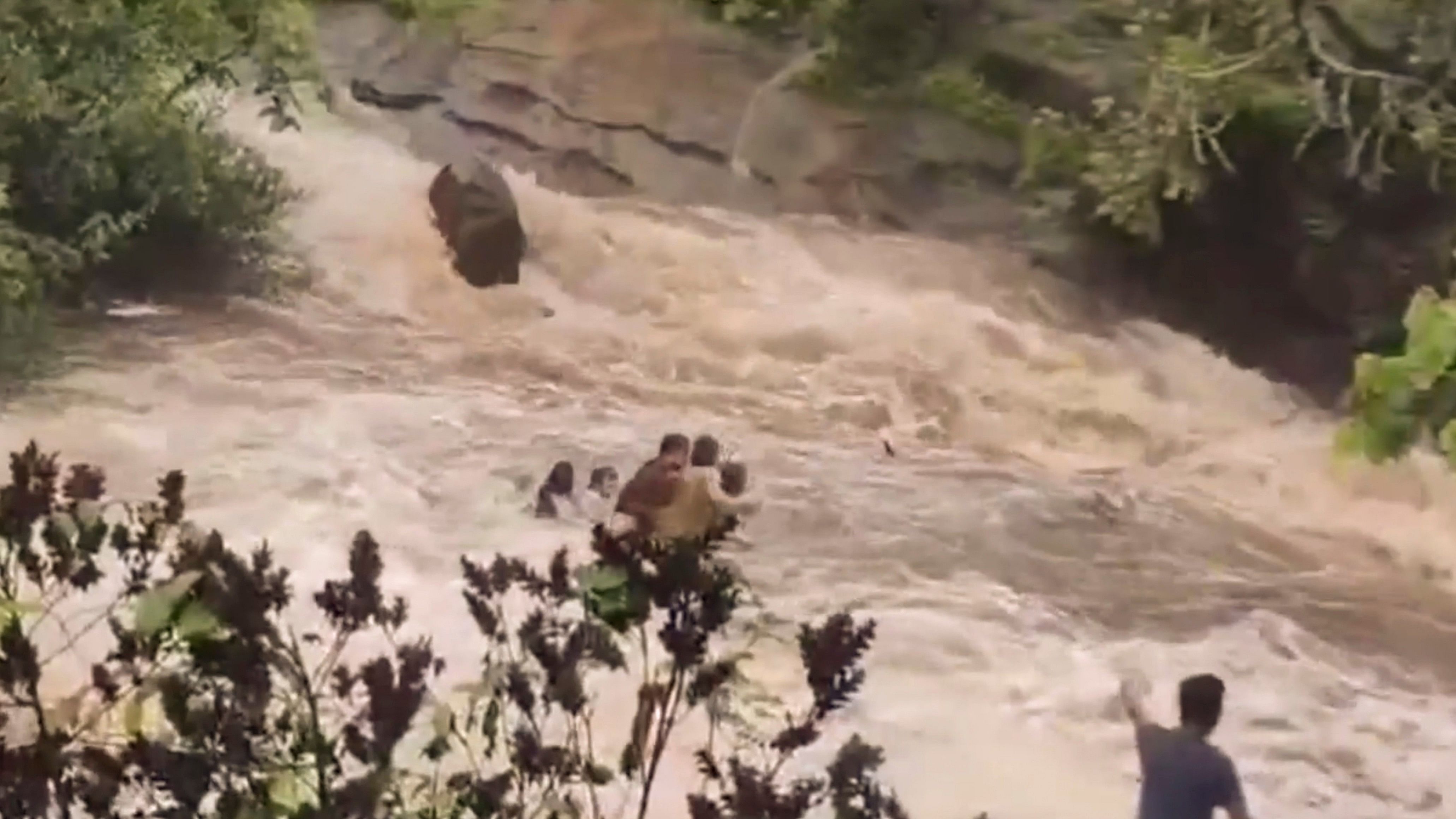
Five people, including a woman and four children had drowned in a waterfall close to the backwater of Bhushi Dam in Pune's Lonavala area.
Credit: PTI Photo
Pune: The Pune district administration has imposed prohibitory orders at several popular picnic spots, including Bhushi Dam and the Pavana Dam region, to ensure the safety of tourists during the monsoon season.
The order, effective from July 2 to 31, prohibits gatherings of five or more persons, restricts individuals from entering deep water bodies, and bans taking selfies and creating reels at these sites.
The administration has already outlined a series of safety measures for hazardous tourist locations, which includes identification and demarcation of dangerous areas, the presence of lifeguards and rescue teams, and the installation of warning boards.
The move comes after an incident on Sunday when a woman and four children were swept away at a waterfall near the Bhushi Dam, a well-known picnic spot in the picturesque Lonavala hill station of Maharashtra's Pune district.
According to a notification issued by Pune Collector Suhas Divase on Tuesday, section 163 of the newly implemented Bhartiya Nagarik Suraksha Sanhita and the Disaster Management Act-2005 will be enforced at specific spots across Maval, Mulshi, Ambegaon, Khed, Junnar, Bhor, Velha, Indapur, and Haveli tehsils.
Violators will face action under relevant legal provisions.
The prohibitory orders will be enforced at specific sites, including the Bhushi Dam, Bendewadi and Dahuli waterfalls in Maval tehsil, as well as Tiger Point, Lion's Point, and Rajmachi Point in Khandala, Sahara Bridge, the Pavana Dam region, Tata Dam, and the Ghubad Lake.
In Mulshi tehsil, the orders cover Mulshi Dam, Tamhini Ghat forest area, and Milkybar waterfall.
The areas in Haveli tehsil include Khadakwasla and Warasgaon dams, and the surroundings of Sinhgad Fort.
In Ambegaon tehsil, the order applies to the Bhimashankar region, Dimbhe Dam region, and Kondhwal waterfall area.
In Junnar tehsil, Malshej Ghat, local dams, the Shivneri Fort region, and Manikdoh are covered.
The prohibitory measures extend to waterfalls around the Bhatghar Dam region and other water bodies and fort areas in Bhor and Velha tehsils. Similarly, water bodies and ghat sections in Khed and Indapur tehsils are included.
Separately, in a joint action by the Lonavala Municipal Council and Central Railway, more than 60 makeshift shops near the Bhushi Dam have been demolished during an anti-encroachment drive.
On Monday, Divase instructed the local administration to take action against unauthorised structures around tourist spots.
Notably, the safety measures at certain locations were outlined amid accidents involving tourists at these locations.
During the monsoon season, a large number of tourists visit the Bhushi and Pavana dams, Lonavala, Sinhgad, Malshej and Tamhini and other places, nestled in the Western Ghats in Pune district, often venturing into unknown and dangerous areas.
The tranquil setting of the Pavana Dam in Lonavala has also been marred by a series of tragic drownings, underscoring the critical importance of implementing enhanced safety measures in the region.
Four persons drowned in the Pavana Dam since January 2024, according to the Lonavala police.
Rescue organisations like the Vanyajeev Rakshak Maval (VRM) reported recovering 27 bodies from various water bodies in Maval tehsil between March and May this year. The district collector had asked officials to identify the dangerous spots at various tourist places, such as dams, waterfalls, lakes, rivers, and cliffs, and mark them as prohibited areas by installing perimeter lines and warning boards, so that tourists do not venture beyond them.
Places which are disaster-prone and where safety measures cannot be taken must be shut for tourists, he said.
Agencies such as revenue, forest, railways, municipal corporations, and the Public Works Department should deploy divers, rescue boats, lifeguards, and life jackets at water bodies frequented by tourists.
Ambulances with first aid facilities should also be deployed, the collector said.
"If required, take action against those who violate the rules and regulations," Divase stated.
He has asked local officials to implement all the measures and prevent loss of life.